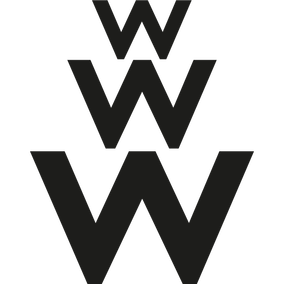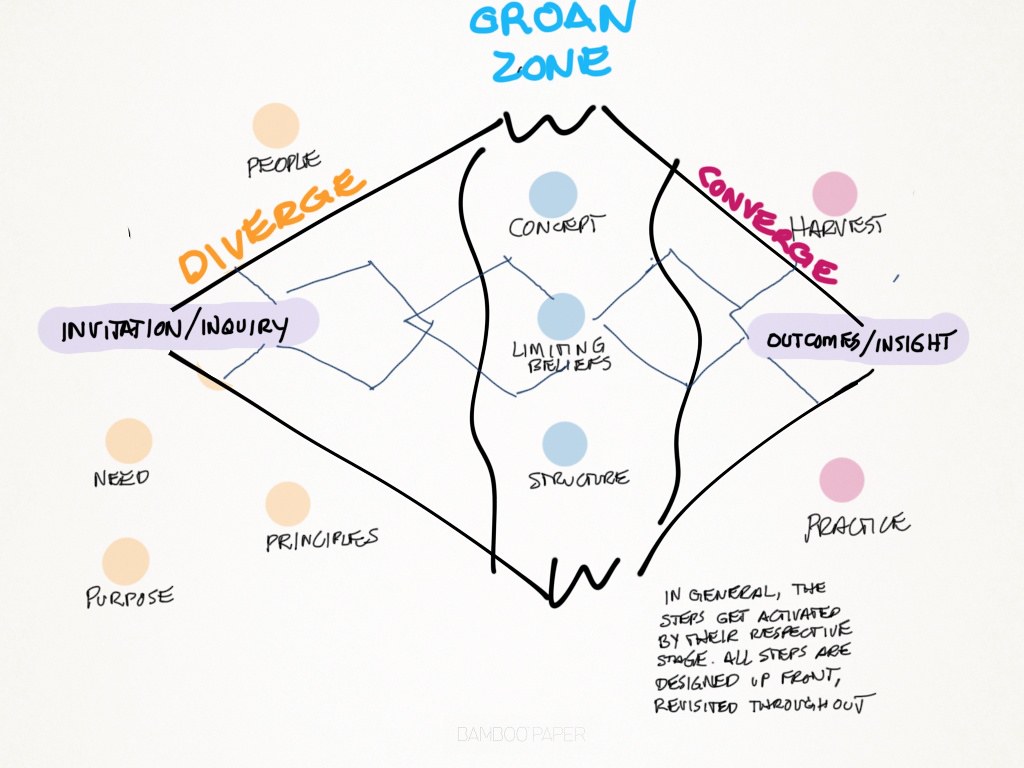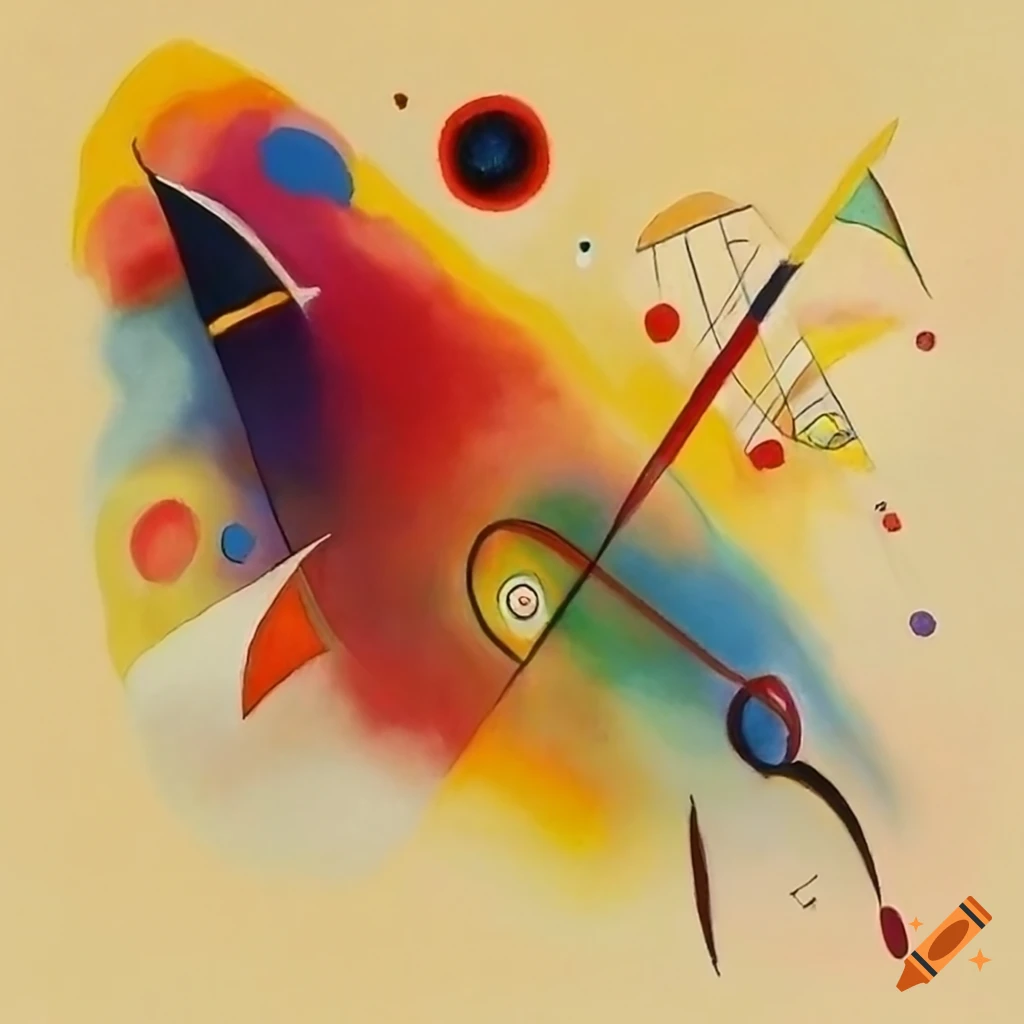
(It’s been nearly nine years that I’ve been playing with Liberating Structures (LS). Now that LS is firmly in my practice, I’m finding ways to share it with everyone else. This blog series (Structuring our liberation – LS under the lens), looks at all structures, including some of the not-so-common structures from the LS repertoire).
Liberating Structures were not created to help with consensual decision-making.
That much I know from some of the pioneers themselves. And I’m actually waiting for an exciting session with our fellow Liberating Journey explorers on using LS to come to closure to blog about whether or not Liberating Structures can actually help reach closure.
But if there is one structure that is bound to help you and you group(s) reach some level of closure, it’s this one: What So What Now What.
What is the purpose of What So What Now What?
The LS website states: “Together, Look Back on Progress to Date and Decide What Adjustments Are Needed” (ha ha ha, with that annoying trend of capitalising all letters). Indeed ‘W3’, as it’s known in the LS world, can do that.
It can also do a few other things really nicely:
- It helps understand what just happened (What?)
- It helps everyone analyse the patterns and interesting ideas emerging (So what?)
- It helps get the group get ready for action (Now what?)
- Because of its logical structure and in-built filtering mechanism of What > So what > Now what, it helps actually come to closure towards a proposal that might itself lead to a sustainable outcome
- In the process – and to me this is perhaps the biggest value of W3 – it helps sharpen our senses in the ‘what’ phase. It forces us to ponder what our senses have registered, not what our mind is telling us. See more below…
- As a Liberating Structure, it uses small groups to go through these stages. In the process it reveals patterns of observations, insights and suggestions for action that the full group spans. Incidentally that is also the reason why W3 remains relatively clunky if you’re searching for something like a unanimous agreement, because this structure invites a wide diversity of opinions.
A key concept at the centre of What So What Now What is the ladder of inference. The analogy of the ladder also shows that strong action only follows good analysis, which itself again follows a grounded observation of ‘what is’. The less time you spend on observing, ie. the less you rely on the sensory data (‘what’ your senses have recorded), the more wobbly the ladder will be. And eventually your actions may not be grounded enough in the reality to lead to breakthroughs.
The ladder of inference is somehow also an inverted iceberg: what you observe is the emerged part, forming a strong basis for analysis. As you delve deeper, you get into the finer nuances of what a group is really aspiring to. The more diligently you take stock of all the observable data, the more you can surface different views, world views, cultures, preferences, etc. and as the image below suggests, avoid misunderstandings

The LS website also lists a number of other purposes for W3:
- Build shared understanding of how people develop different perspectives, ideas, and rationales for actions and decisions
- Make sure that learning is generated from shared experiences: no feedback = no learning
- Avoid repeating the same mistakes or dysfunctions over and over
- Avoid arguments about actions based on lack of clarity about facts or their interpretation
- Eliminate the tendency to jump prematurely to action, leaving people behind
- Get all the data and observations out on the table first thing for everyone to start on the same page
- Honor the history and the novelty of what is unfolding
- Build trust and reduce fear by learning together at each step of a shared experience
- Make sense of complex challenges in a way that unleashes action
- Experience how questions are more powerful than answers because they invite active exploration
How does it work?
There are various ways to work What So What Now What but at its simplest, here is how it works:
WHAT
- Individually, take a minute to recall everything you’ve observed with your senses: what you’ve heard, seen, and -why not- even smelled, touched and/or tasted (ie. the WHAT?)
- Then in a small group, share your individual observations with each other for 3-8 minutes
- Finally, with the whole group share your collective observations across all groups in whatever time seems relevant (the LS website suggests 3 minutes, which seems awfully short to me – I would go for 5-10 minutes if you want a collective sense of direction at the end of W3)
SO WHAT
- Again individually, take a minute to review what the group has observed as a whole, and tease out important patterns, insights, outlier thoughts, anything that resonates with you (ie. the SO WHAT?) and that seems important. And ask yourself: Why does that seem important?
- Then in a small group, share your individual insights with each other for 3-8 minutes
- With the whole group, share your group insights across all groups in whatever time seems adequate
NOW WHAT
- Finally, individually once more, you take a minute to tease out what actions seem to make sense (the NOW WHAT?)
- As in previous steps, share in a small group for 3-8 minutes
- And again in the whole group…
Mind that differentiating between observations and insights is rather difficult for some (most?) people and groups. Give examples. Perhaps double down on the fact that if something cannot be recorded by either of our 5 senses it’s not in the WHAT category but rather in the SO WHAT (or even NOW WHAT). The LS website offers an example of how to make these more distinct:
“Note that the expression of emotions can be observed as a “What” (e.g., “many people were smiling and laughing” rather than suggesting people were “happy” [which would be more of a so what item])“. You are invited to correct people and explain the differences between these stages, and to make sure the whole group doesn’t go too quickly over the WHAT phase, which is the most difficult (because largely untrained).
Who could really benefit from What So What Now What?
Much like the last LS I blogged about (Tiny Demons), W3 is for anyone, anywhere, anytime there is a point in pondering what is happening and anticipating the next phase…
I can imagine that particularly for the Scrum/Agile/Lean sprinters this structure makes sense as they go through a perpetual cycle of continuous improvement. But really any group that wants to take a pause to observe, reflect and infer next steps can put this structure to good use…
What is liberating about it?
I guess there are at least two things that are liberating about What So What Now What:

For one, it is indeed one of the few structures from the repertoire that are rather ‘convergent’ than ‘divergent’.
LS is all about liberating the voice of everyone, so it stems from a distinctly divergent drive. And as much as divergent thinking is a) necessary and b) really fun (and also c, d, e, f, g, h as there are many other nice features of divergent thinking) it is also frustrating at times to not seem to find any sense of direction.
That’s where a structure like W3 helps us feel closer to closure 😉
But again perhaps the most liberating part of W3 is that it sharpens our senses, continuously, so we can make sense of our reality based on a much higher, finer granularity of data.
That being said, the latter type of liberation only really comes once you have started sharpening these senses. It doesn’t come easy. We are so used to jumping into analysis, and to action, that staying at the level of observations is not a given, it’s a (self-)taught skill, which requires discipline and practice.
Maybe another liberating element of W3 is that it can be used as the go-to structure to debrief anything. This, in turn, helps continually sharpen our ability to observe, analyse and act.
How can it be stretched even further?
Like many LS, What So What Now What can be adapted in various ways. Here are a few suggestions that come to my mind:
- Do a turbo W3 e.g. 5 mins 5 mins 5 mins instead of the full sequence
- On the other hand, try an extended version of W3 to really harvest insights in the service of a ‘full group convergence’
- Based on the harvest of W3 across the groups, carry out another cycle of W3: one ‘integrative’ W3 sequence to get the whole group to the next stage. Build upon observations from the whole group, build on the analysis of the whole group, and finally decide which actions should emerge, based on the whole group. Perhaps segue the ‘Now What’ with Min Specs if you feel you’re still too deep in the laundry list (ie. too many items on the list of next steps)…
- Nest a 1-2-4-all inside each step to play with more structures at once, and with an added filtering mechanism
- Try more often to invite the group to just linger in the ‘WHAT’ phase so they can share what they’re seeing/hearing etc. This builds their muscle to use W3 well
- Online, using the chat to do this works wonders too, with everyone sharing their personal observations / insights / actions and discussing what emerges at every step as a group before getting into the next stage with their individual notes in the chat box
- For the WHAT part, invite a simple ethnographer to share a number of sense-able facts they have plucked out and about… and perhaps combine this with peoples’ individual observations, or get them on the other hand to analyse the data gathered by the simple ethnographer?
What riffs and variations have you tried with What So What Now What? Which have been helpful, which haven’t?

So what now (what? 😉
Now what indeed?
Just give it a try, stretch it, embrace the ladder of inference, and test how well What So What Now What helps you and your groups to come to closure.
Whatever insights you have about this, I would love to hear it, as grist for the mill of my upcoming blog post on LS for closure and action…
Related stories
See other post in this ‘LS under the lens‘ blog series. And also:
Leave a comment